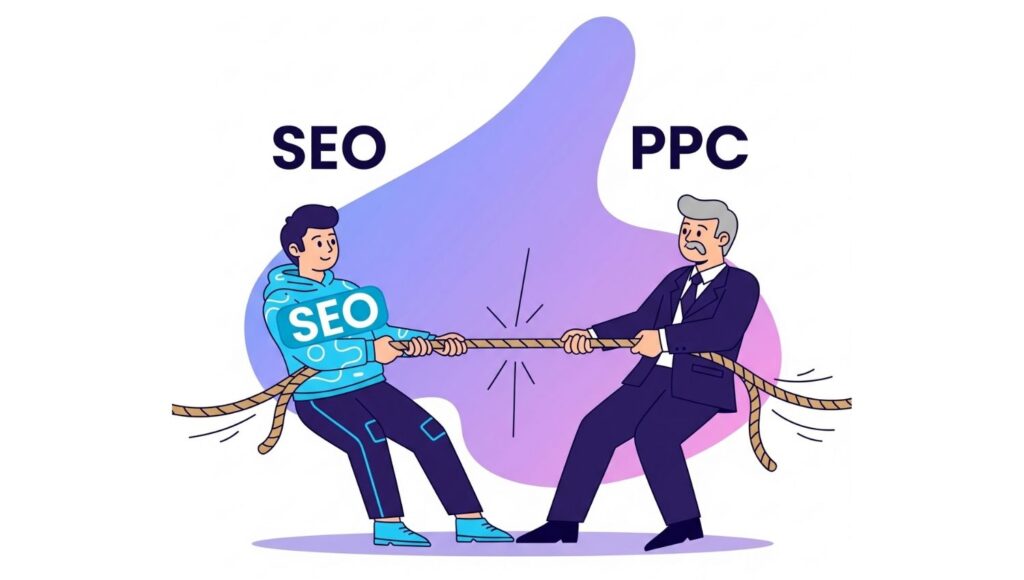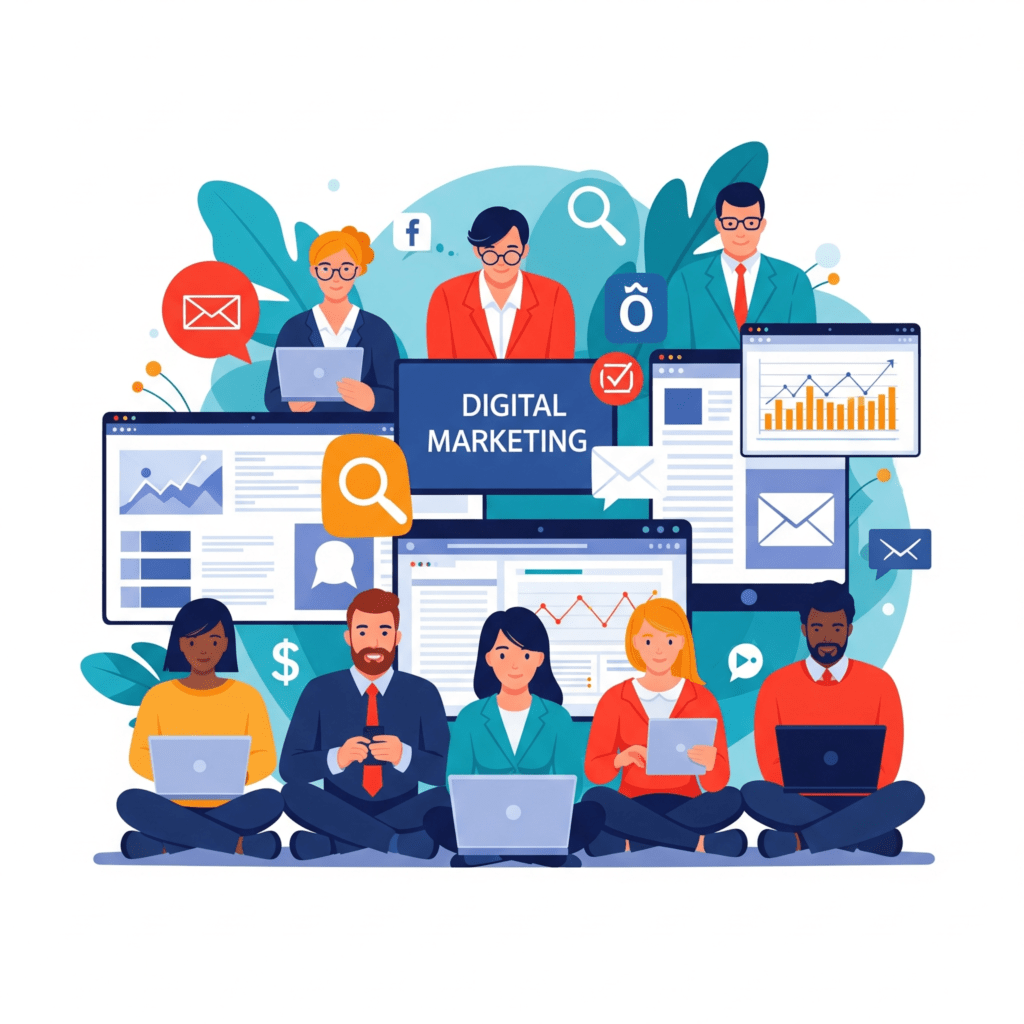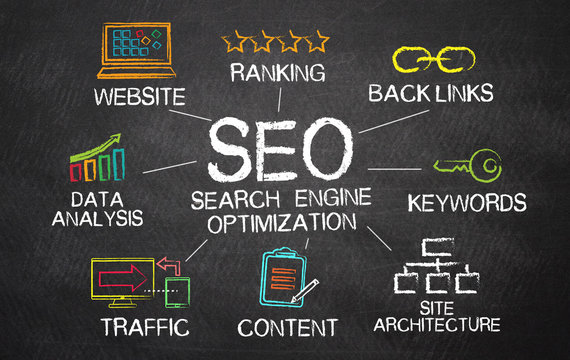Table of Contents
SEO vs PPC: What’s Best for Your Business?

Introduction: The Digital Tug-of-War
With the changing dynamics of digital marketing, two strong strategies tend to go toe-to-toe — SEO (Search Engine Optimization) and PPC (Pay-Per-Click). Both share the goal of elevating visibility and bringing traffic, but each has very different approaches, timing, and cost methods.
If you’re a business owner looking where to put your money — organic, long-term growth through SEO or fast wins through PPC — this guide will assist you in making a knowledgeable choice.
What is SEO?
SEO is short for Search Engine Optimization, a method employed to get your website ranked higher on search engines such as Google without paying for adverts.
The Major Elements of SEO:
- On-Page SEO
- Optimizing content, meta titles, descriptions, headers, and keywords.
- Mobile-friendliness, page speed, and user experience.
- Off-Page SEO
- Backlinks, social signals, and brand mentions.
- Guest blogging and influencer marketing.
- Technical SEO
- Site structure, XML sitemaps, schema markup, robots.txt, and crawlability.
- Content Strategy
- Writing high-quality, highly relevant, keyword-rich blog posts, landing pages, and product pages.
What is PPC?
PPC is an abbreviation for Pay-Per-Click, a type of internet advertising in which the advertiser remunerates a fee every time their advertisement is clicked. Google Ads is the most prevalent PPC platform, although Bing Ads, Facebook Ads, and LinkedIn Ads are also popular.
Types of PPC Advertising:
- Search Ads (Text-based ads on search engines)
- Display Ads (Banner ads on websites)
- Shopping Ads (For eCommerce)
- Video Ads (YouTube)
- Remarketing Ads (Targeting previous visitors)
SEO vs PPC: The Core Differences
| Feature | SEO | PPC |
|---|---|---|
| Cost | Free traffic (but requires investment in time & resources) | Pay per click/impression |
| Time to Results | Slow (3-6 months or more) | Immediate |
| Sustainability | Long-term | Short-term (stops when budget stops) |
| Trust Factor | Higher (organic results are more trusted) | Lower (labeled as ads) |
| Click-Through Rate (CTR) | Higher in many cases | Lower for cold traffic |
| Best for | Long-term brand authority and organic traffic | Instant visibility and short-term promotions |
Pros & Cons of SEO
Pros:
- Long-Term ROI Once ranked, your content brings traffic continuously with minimal ongoing cost.
- Greater Trust & Credibility People have greater trust in organic listings compared to ads.
- Long-Term Better CTR Particularly for navigational and informational searches.
- Gains Momentum Over Time The more you add quality content and links, the healthier your site will be.
Disadvantages:
- Slow Results It may take months for visible gains to be achieved.
- Algorithm Dependency
Google updates can alter rankings in a single night.
- Needs Expertise
Good SEO requires technical skills and regular work.
Advantages & Disadvantages of PPC
Pros:
- Instant Traffic Your ad can be up and driving leads overnight.
- Highly Targeted Target by location, device, time, keywords, interests, etc.
- Easy to Test
A/B testing of offers, landing pages, and ads is easy.
- Scalable With additional budget, you can scale reach immediately.
Cons:
- Expensive in the Long Run Competitive markets can cost $10-$50+ per click.
- Short-Term Focus When you cut off payments, traffic ceases as well.
- Ad Fatigue Users may become desensitized to ads or completely ignore them.
When Should You Use SEO?
SEO is a good choice if:
- You’re establishing a long-term brand.
- Your niche has informational searches (e.g., SaaS, healthcare, education).
- You want to minimize reliance on paid advertising.
- Your content budget is robust, and you’re able to regularly produce value-first posts.
SEO Success Examples:
- A tech blog is ranking for 100+ terms generating 50K monthly traffic — all organic.
- A local service business maximizes Google Business Profile and receives frequent inquiries.
When To Use PPC?
PPC is perfect if:
You require leads immediately (e.g., for a product launch or holiday campaign).
You’re launching a new product or landing page.
You’re operating in a highly competitive market where SEO is too slow.
Your sales funnel is short and you can efficiently convert traffic.
Examples of Success with PPC:
A real estate agency receives 200+ leads per month through Google Ads.
- An eCommerce brand leverages Shopping Ads to drive new product sales during holidays.
How SEO and PPC Can Work Together
A wise business doesn’t make SEO and PPC rivals. Rather, it integrates them tactfully.
Ways to Integrate SEO + PPC:
- Use PPC for Fast Data Identify top-performing keywords and incorporate them into SEO content.
- Dominate SERPs
Appear in both paid and organic results for the same search term.
- Remarketing Employ PPC to re-target individuals who used your site by way of SEO.
- Improve CTR Employ ad copy tests in PPC to optimize meta descriptions and titles in SEO.
- Boost New Content Push blog posts using PPC while awaiting SEO to pick up.
Cost Comparison: SEO vs PPC
| Scenario | SEO Estimate | PPC Estimate |
|---|---|---|
| Monthly Budget | $500–$2,000 (content, tools, links) | $1,000–$10,000+ depending on niche |
| Time to ROI | 3–6 months minimum | Instant (but only while running) |
| Sustainability | Years | Ends when ad spend ends |
| Average CTR | 20–40% for top results | 2–10% depending on copy/targeting |
Which Is Best for Small Businesses?
- If you have a tight budget and can afford to wait: begin with SEO.
- If you have a budget to test and you need quick returns: use PPC on a constrained budget.
- Ideally: distribute 60% SEO, 40% PPC first. Phase out PPC as SEO picks up.
Industry Use Cases
eCommerce:
PPC (Google Shopping) is excellent for product exposure. Utilize SEO for blogs, category pages, and long-tail phrases.
Healthcare:
SEO is paramount because of trust and authority. PPC may drive seasonal promotions or new services.
B2B SaaS:
SEO generates long-term inbound leads. Use PPC for free trials, demos, and webinars.
Local Services:
Local SEO + Google Local Ads = plumber, electrician, salon, etc. great combo
Questions to Ask Before You Decide:
- Do I require quick leads or long-term growth?
- What is my monthly marketing budget?
- How competitive is my industry?
- Do I have time to create consistent content?
- Am I capable of optimizing campaigns and landing pages?
The Last Word: SEO vs PPC — or Both
There is no one-size-fits-all solution. Here’s a practical approach, though:
- Opt for SEO if you desire long-term growth, brand credibility, and long-term traffic.
- Opt for PPC if you require instant visibility, immediate sales, or rapid testing.
- Opt for both if you wish to be the top result on search engines and drive maximum ROI.
Action Plan for Your Business
Always remember:
- Audit Your Current Digital Presence
See how well your website ranks, what it’s targeting, and how quickly it loads.
- Establish Clear Goals Is your intention lead generation, traffic, branding, or sales?
- Test a Hybrid Approach Employ PPC for high-conversion keywords. Employ SEO for long-term, high-traffic keywords.
- Monitor & Improve Utilize tools such as Google Analytics, Search Console, and SEMrush to track performance.
Conclusion
Both SEO and PPC come with their own strengths. Which one to choose depends on your business objectives, financial resources, and timelines. Usually, the best brands capitalize on both for a well-rounded, data-driven online marketing strategy.
Still lost? Talk to our gurus at TheNextDigital — we’ll create a winning plan for your business!
Frequently Asked Questions (FAQ)
- What is the difference between SEO and PPC?
SEO generates free, long-term traffic via organic rankings. PPC generates immediate traffic via paid ads. - Which is better for quick results?
PPC is more suitable for rapid visibility and instant leads. - Does SEO take longer to show results?
Yes, SEO generally takes 3–6 months to produce noticeable effect. - Which is cheaper?
SEO is cheaper in the long term, whereas PPC involves constant ad expense. - Can I use both SEO and PPC together?
For sure. A hybrid approach can drive traffic while establishing long-term growth.


